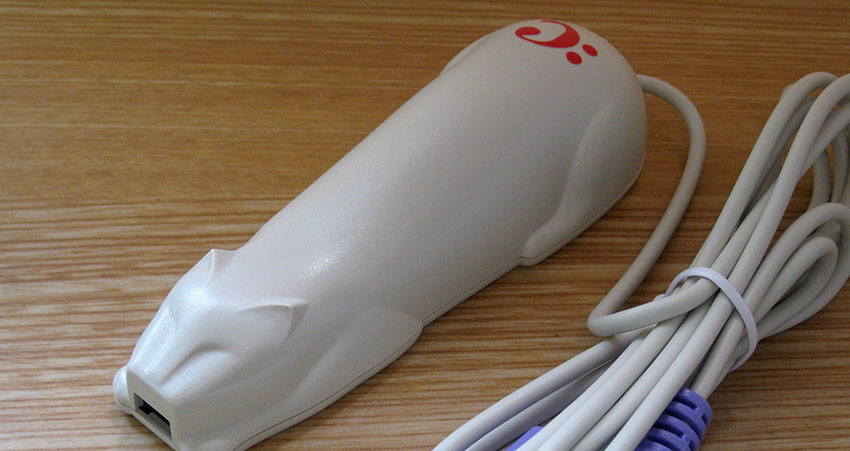For most of us, asking to remember what we did yesterday can create pause, but when I started thinking about life working in the digital ecosystem since 1996, one of the technologies that caused me to giggle was a device that landed on my desk back in 2000 – the CueCat.
In marketing, as in this case, sometimes we decide that some things are better left on the shelf or perhaps we’re reminded that some tech was just too early to the game. This was certainly true of the beleaguered CueCat, listed by Time in 2010 as one of the 50 worst inventions.
Back when we would navigate the multiple cords being tethered to all sorts of things on our computers, this white plastic device with a red lit up nose was shaped just like a stretched out real mouse (like Rudolph making his way through a snowstorm).
It represented the first time a device was introduced that would try to connect the print world with the digital one. Marketers raved about the idea of digital convergence, because at the time “digital” was becoming a real scaling opportunity as we were all trying to figure out how to merge our marketing worlds.
With over 1,000,000 devices shipped and $185 million in investment, this product hinted at convergence capabilities but neglected to make the process easy for the end user by requiring nearly an hour just to register its use through multiple questions and surveys.
The rationale behind CueCat: you could scan a simple UPC-like code called “CUE” on any printed document like a magazine article, ad, etc. Once the “CUE” was read, your web browser would be directed to that digital page to get more details or relevant information as it pertains to that printed material. It sounded amazing at the time.
Why set the digital Way-Back Machine to 1996 and relive a failed quirky device? Let me now remind you that up until the COVID-19 pandemic, I wouldn’t have been able to sell you on the idea of QR codes, given their cross-device issues, multiple different apps needed and a world of people asking, “What in the world IS that thing?”
Today, with some device updates having occurred, most of us can’t go out to dinner and order without knowing how to use QR codes. So, while necessity might have forced its adoption, we now have a way to deliver convergence simply and without cute plastic devices.
You can’t go anywhere without seeing a QR code on something, from billboards, soda machines, music devices to almost every news channel on the air. But we are far from understanding this tech as a valuable method of marketing, especially to ubiquitous smart devices.
The smart marketers have leaned in on this engagement method and worked with brands to understand and build ROI models. We have seen such tactics drive actions like placing a product directly into a cart or sending a consumer to a specific page to acquire more brand insights. But how do you measure success?
The lesson now for all marketers is how to embrace these tactics both in design as well as in tracking to begin to answer the big questions: “Do they work, and what’s good and what’s bad?” The practicality of it is still very new, let alone the complications and multiple variations on how it’s being applied.
For example, you can’t say you are being innovative when you negate user behavior and place QR codes on the bottom corner of a TV commercial the size of a postage stamp– and assume a consumer will jump off their couch to scan. Or you place that code on screen for a second, thinking they have enough time to grab their smartphone and take action.
Like the CueCat and any new innovative marketing, you need to spend time thinking about and behaving like one of the consumers you are looking to reach. Understand the consumer journey and make their ability to engage with a brand simple and easy and especially ownable and authentic to them.
So, what’s the history lesson? It all comes back to continually finding new and different ways to break the clutter of mass marketing messages and simplify the way we can deliver an action. And sometimes we need to look back before we look forward and appreciate the “first man on the moon,” and leverage the thinking to continue to evolve and innovate.
There will be more CueCats and we will have more failures. Yet what makes this industry so exciting is that those setbacks may give us the keys to unlocking more and better engagements with consumers.
Sean Black is Head of North America at VDO.AI

